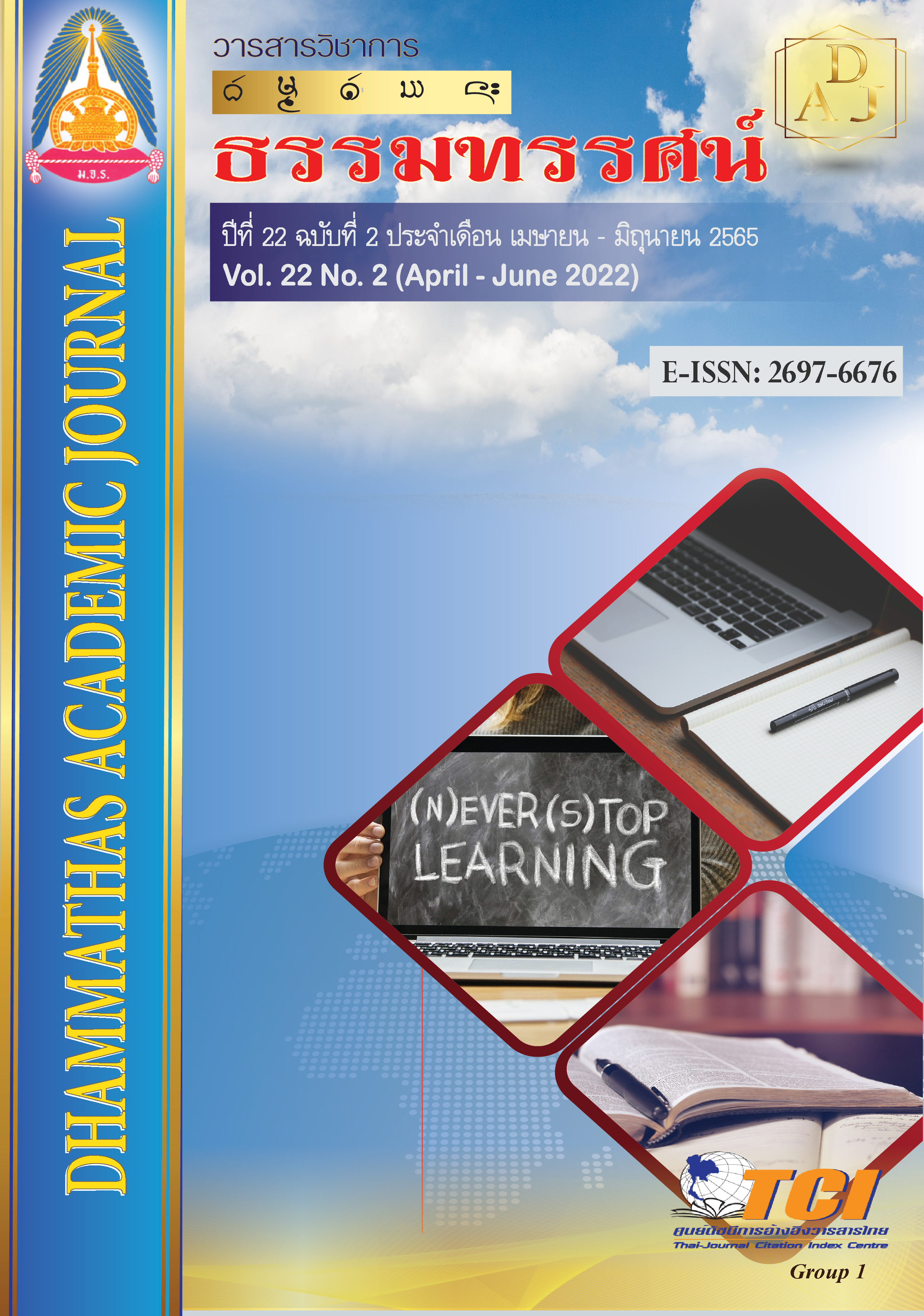The sexuality transition processes from male to homosexual male of main characters: A case study of Thai series from LINE TV between 2015 and 2020.
Main Article Content
Abstract
The aim of this study was to investigate the narrative technique of a transitioning process of sexuality from male to homosexual male main characters in Thai TV series. This study involved a case study of homosexual male characters on LINE TV series broadcast between 2015 and 2020, a total of 15 series. Data were analyzed using textual analysis and presented using descriptive analysis.
The findings of this study revealed that: The Thai TV series tended to gradually construct the narrative technique of a transitioning process for the main male characters, in which the sexuality of the main characters changed from heterosexual males to
homosexual males. This transitioning process typically follows four similar steps, as follows: Step 1: The characters maintained traditional masculine values. In this step, the characters were still committed to their assigned sex and the social expectations embedded within their assigned sex, especially the preference for heterosexuality. The characters refuse to display homosexual tendencies in public. Step 2: The characters faced a masculinity breakdown. Typically, in such a series, the main characters face a variety of incidents that lead to the breaking down of their masculinity at different points in time. This step represents the start of the main characters’ realizing that denying their homosexuality has caused them misery and accepting it could bring them happiness. The main characters are confused about whether they have a greater desire toward heterosexuality or homosexuality. Step 3: The characters fought, negotiated, and clarified any confusion they had about their sexuality in order to realize their true sexual orientation. In this step, the main characters try to free themselves from confusion about their sexuality through a variety of ways, including fighting, negotiating, and finding the clarity to overcome their confusion. Step 4: The characters accepted their homosexuality. At this stage, the main characters finally start to accept their homosexuality and begin to display it through non-verbal language rather than verbal language. Later, when the main characters feel more confident about their homosexuality, they reveal themselves through verbal language too.
Article Details

This work is licensed under a Creative Commons Attribution-NonCommercial-NoDerivatives 4.0 International License.
เพื่อให้เป็นไปตามกฎหมายลิขสิทธิ์ ผู้นิพนธ์ทุกท่านต้องลงลายมือชื่อในแบบฟอร์มใบมอบลิขสิทธิ์บทความ ให้แก่วารสารฯ พร้อมกับบทความต้นฉบับที่ได้แก้ไขครั้งสุดท้าย นอกจากนี้ ผู้นิพนธ์ทุกท่านต้องยืนยันว่าบทความ ต้นฉบับที่ส่งมาตีพิมพ์นั้น ได้ส่งมาตีพิมพ์เฉพาะในวารสาร วิชาการธรรม ทรรศน์ เพียงแห่งเดียวเท่านั้น หากมีการใช้ ภาพหรือตารางของผู้นิพนธ์อื่นที่ปรากฏในสิ่งตีพิมพ์อื่นมาแล้ว ผู้นิพนธ์ต้องขออนุญาตเจ้าของลิขสิทธิ์ก่อน พร้อมทั้ง แสดงหนังสือที่ได้รับการยินยอมต่อบรรณาธิการ ก่อนที่บทความจะได้รับการตีพิมพ์References
กาญรัตน์ อินทุรัตน์. (2551). การเปิดเผยตนเองต่อครอบครัวของบุคคลที่รักเพศเดียวกัน. (วิทยานิพนธ์วิทยาศาสตรมหาบัณฑิต). กรุงเทพฯ: จุฬาลงกรณ์มหาวิทยาลัย.
กาญจนา แก้วเทพ. (2557). ศาสตร์แห่งสื่อและวัฒนธรรมศึกษา. กรุงเทพฯ: ภาพพิม.
ชิญวร ฟ้าดิษฐี. (2552). เว็บไซต์เกย์: พื้นที่สาธารณะสำหรับคนชายขอบ. วารสารดำรงวิชาการ, 8(1), 81-101.
จารุวรรณ คงยศ. (2560). เพศภาวะ เพศวิถี ประสบการณ์ชีวิตของกะเทยในคุก. (วิทยานิพนธ์สังคมวิทยาและมานุษยวิทยามหาบัณฑิต). กรุงเทพฯ: มหาวิทยาลัยธรรมศาสตร์.
ชีรา ทองกระจาย. (2561). เอกสารการสอนชุดวิชาการพัฒนามนุษย์ในบริบทโลก หน่วยที่ 8. นนทบุรี: มหาวิทยาลัยสุโขทัยธรรมาธิราช.
นฤพนธ์ ด้วงวิเศษ และคณะ. (2560). เมื่อร่างกลายเป็นเพศอำนาจเสรีนิยมใหม่ของเพศวิถีในสังคมไทย.กรุงเทพฯ: ศูนย์มานุษยวิทยาสิรินธร.
นฤพนธ์ ด้วงวิเศษ. (2563). แนวคิดเรื่อง ความหลากหลายทางเพศ ในกระบวนทัศน์วิทยาศาสตร์และสังคมศาสตร์. วารสารวิชาการมนุษยศาสตร์และสังคมศาสตร์ มหาวิทยาลัยบูรพา, 28(3), 312-336.
ปุรินทร์ นาคสิงห์. (2547). เกย์: กระบวนการพัฒนาเอกลักษณ์และวิถีชีวิตทางเพศ. (วิทยานิพนธ์สังคม วิทยาและมนุษยวิทยา). กรุงเทพฯ: มหาวิทยาลัยธรรมศาสตร์.
พรชัย ฉันต์วิเศษลักษณ์. (2561). นวัตกรรมสื่อใหม่ในยุคสื่อสังคมออนไลน์เฟื่องฟูกับการปรับตัวของสื่อโทรทัศน์. วารสารสารศาสตร์และสื่อสารมวลชล มหาวิทยาลัยธรรมศาสตร์, 11(1), 223-243.
Cass, V. (1979). Homosexual identity formation: A theoretical model. Journal of Homosexuality, 4(3), 219-235.
Line TV. (2559). Club Friday The Series 8 ตอน รักแท้หรือแค่สับสน. เข้าถึงได้จาก https://tv.line.me/cfts8
______. (2561). Love By Chance บังเอิญรัก. เข้าถึงได้จาก https://tv.line.me/lovebychanceseries
______. (2560). Present Perfect. เข้าถึงได้จาก https://tv.line.me/presentperfect

